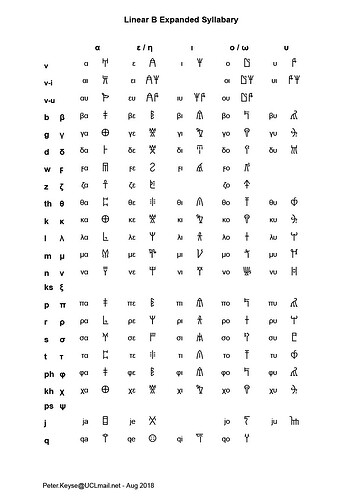Hi. We all need a ‘use case’ yes? (rhetorical)
Mine reverts to a legacy interest in using Mycenaean Greek or Linear B to write poetic prose. To do this it’s necessary to break Homeric Greek text into CV (consonant/vowel), diphthongs and vowels and somehow extract syllables from the text - a process that NLP calls syllabification.
I’ve pestered a few GPT models with this topic over the past few months and Claude 2 is proving extremely useful but I thought the wider NLP community might offer additional insight.
Here’s the Expanded Linear B syllabary I devised a couple of years ago that Claude is able to interpret and work with:
I’ve used this with the first 25 lines of the Iliad with some good effect in that it scores on my mantra - if it sounds like Homeric Greek then it possibly is.
I’m fairly new to NLP syllabification and while Gen Ai seems happy to have a stab at it I suspect I’m going to need to train a model to get academic grade precision. The only other constraint is that as this is part of my ‘Ai in a Google Sheet’ project the NLP functions will be written in Apps Script.
Thanks
